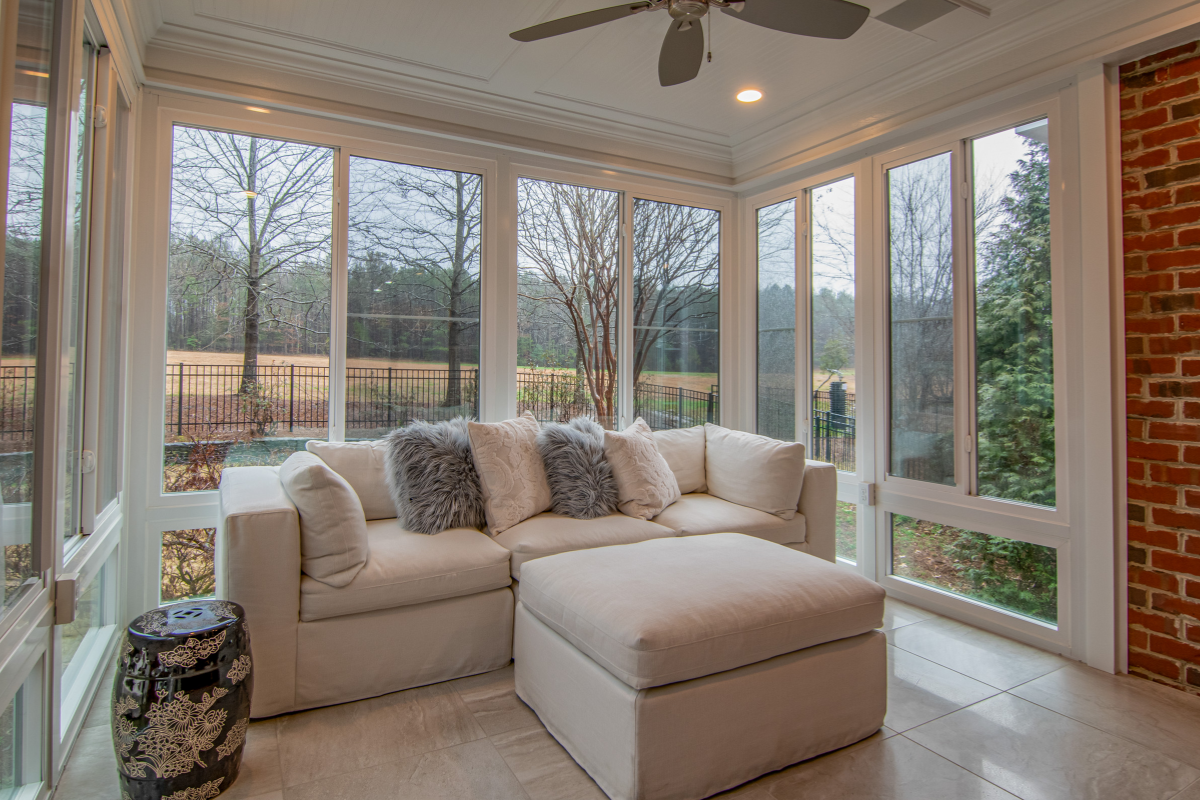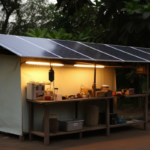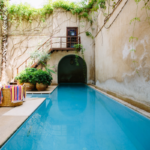Have you ever felt like your home turns into an oven during the hot summer months?
As soon as the mercury starts rising, many homeowners struggle to keep their living spaces cool without astronomical energy bills.
If you can relate, installing solar screens on your windows could be a game-changer.
Solar screens, also called sun screens, are exterior window coverings designed to shield your home from the sun’s blistering rays. They block heat and glare, protecting your interiors while lowering cooling costs.
Solar screens also filter out UV rays, boost privacy, and allow you to keep enjoying breezy outdoor views.
Time to explore why Arrowhead Solar Screens Texas might be one of the smartest upgrades you can make this season.
Post Contents
Main Types of Solar Screens
Solar Shade Cloth
One budget-friendly solar screening option is shade cloth. Brands like Sun Tex manufacture fabric in different shade densities to mount onto existing screens or wooden frames.
An 80% shade cloth blocks four-fifths of sunlight, while still allowing you to see outside. Stepping up to 90% density further dims the glare.
Custom Fit Screens
For a seamless look and the best heat protection, many homeowners opt for screens sized precisely to their window openings.
Companies like Florida’s Sunblox craft custom solar screens using aluminum frames and tightly woven Suntex fabric.
Installed costs run around $7.50 per square foot. Sturdy materials and proper fitting ensure these screens withstand weather conditions while effectively blocking solar gain.
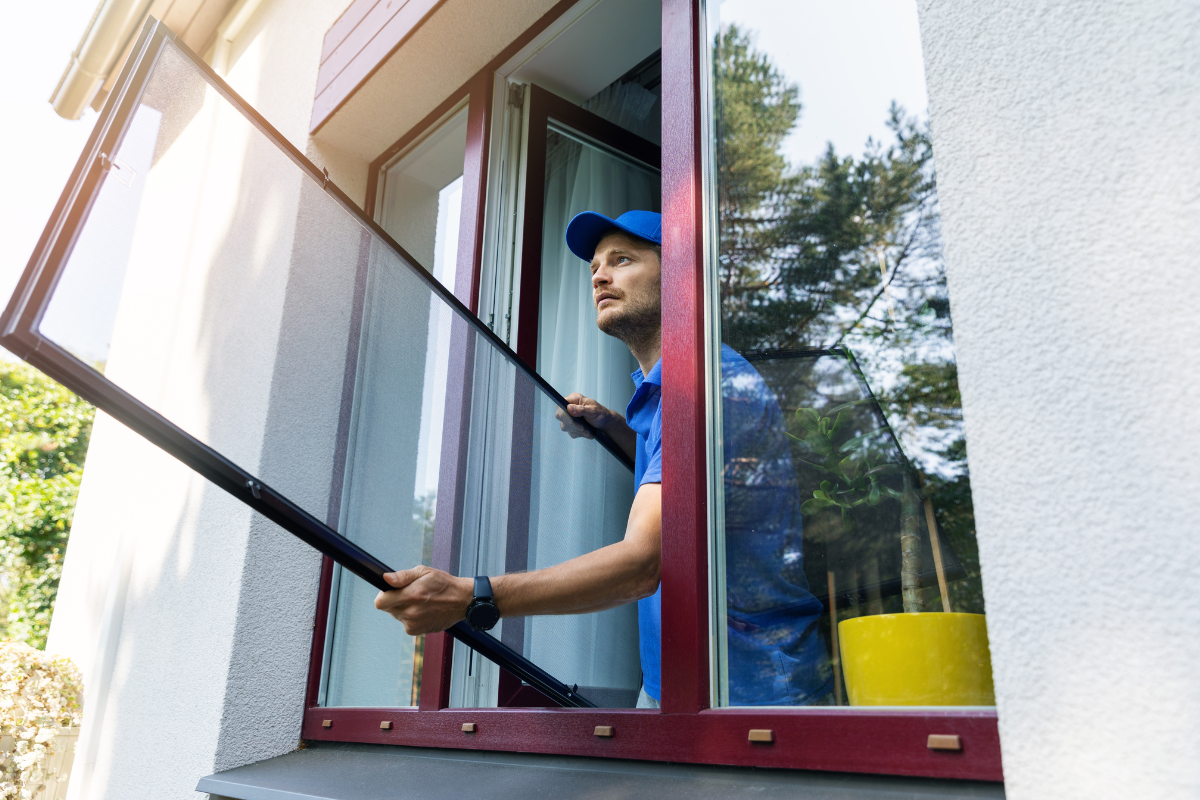
DIY Snap-On Screens
If you don’t mind getting your hands dirty, snap-on solar screen kits like EZ Snap allow you to tackle the job yourself.
The installation process entails measuring and cutting the fabric panels, securing metal grommets around the edges, then affixing caps over pins lining your window frame. Once in place, the snug fit blocks sunlight neatly and affordably.
Key Benefits of Solar Screens
Slash Cooling Costs
One major perk of solar screens is dramatically lower electricity bills. By blocking up to 90% of sunlight before it strikes your windows, external screens allow less heat to penetrate the glass and get trapped inside your home.
This keeps interiors cooler, reducing reliance on air conditioning. You could save 35% or more on energy costs just by adding screens!
Protection From UV and Glare
Solar screens also supply invaluable health and aesthetic benefits. The tightly woven mesh construction blocks UV radiation, protecting your skin as well as furnishings.
Solar screens prevent glare too. You can finally watch TV or work on your computer without annoying reflections or contrast issues from intense daylight.
Enhanced Privacy
Unlike see-through window screens designed just to keep out insects, quality solar screens obscure views into your home.
Passersby can’t peer through the dense, darkened material like they can with uncovered glass or flimsy curtains. Solar screens grant privacy on demand whenever you want it.
Outdoor Views Preserved
While solar screens excel at filtering sunlight, they still allow delightful outdoor vistas. Air circulates freely through the perforated fabric.
Plus, solar screens install externally, leaving your actual windows clear and unblocked. Your panoramas don’t disappear behind solid blinds or drapes. It’s the best of both worlds!
Customization and Installation
Measuring Is Key
Getting a tailored fit starts with careful measurements of your window openings. Height, width, and diagonal dimensions allow vendors to fabricate solar screens to your precise specifications.
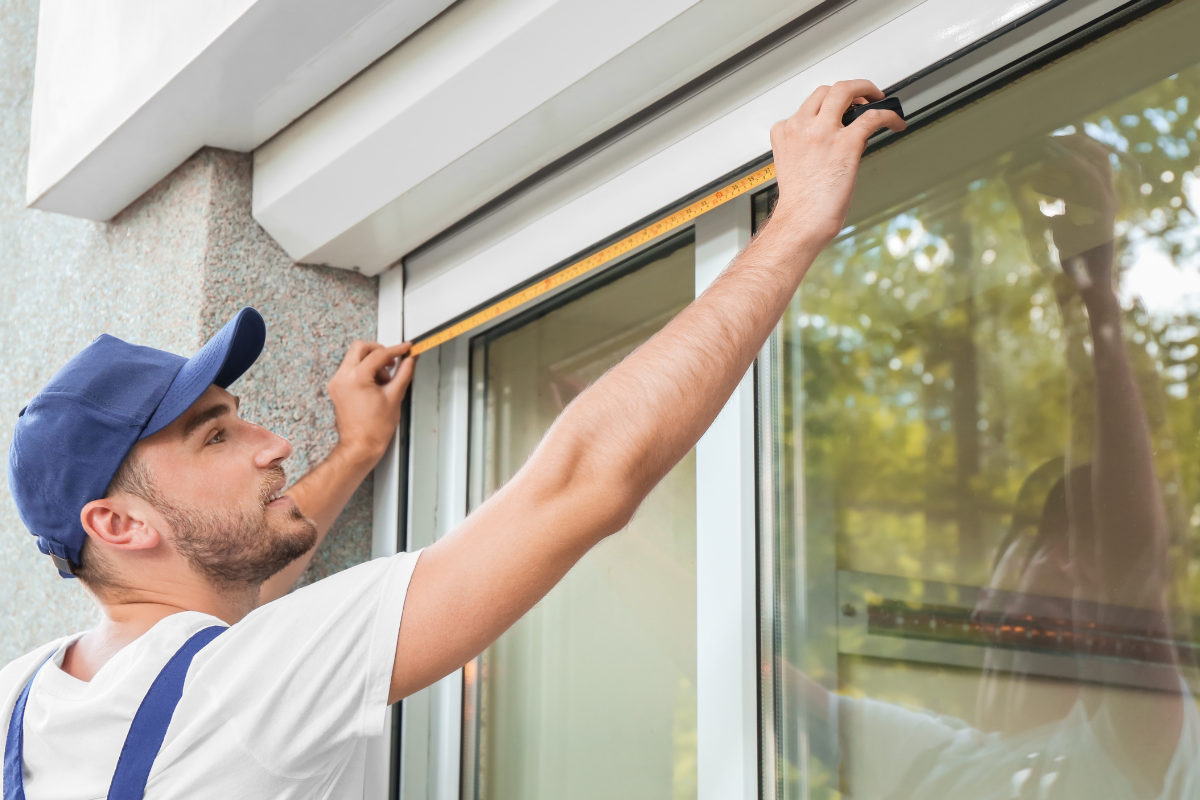
This guarantees light won’t sneak around the edges, reducing effectiveness. It also contributes to an integrated, built-in look.
Durable Materials Withstand Elements
Solar screen frames come in materials like extruded aluminum or rigid vinyl. These hold up better to weather and seasonal temperature changes than flimsier metal screen mesh.
Premium solar mesh fabrics like Sunbrella canvas or Phifer Suntex resist fading, deterioration, and tearing too.
Multiple Mounting Methods
Installers can secure solar screens using various attachment methods. Velcro tabs offer easy removal. Screws drilled into window casings provide the most durable anchor.
For homes with siding, clip systems wedge securely between wall panels while avoiding damage. The approach depends on your home’s construction and screen style.
Professional Installation Recommended
While DIY kits work for some, complex measuring and perfect alignment make professional solar screen installation well worth the investment.
Quality vendors guarantee properly fitted screens that block solar heat as advertised. Experienced installers also ensure the mounting method suits your business or home’s walls.
Additional Considerations
Regional Climate Differences
How much heat solar screens must combat depends partly on where you live. In scorching climates like Arizona and Texas, solar screens prove especially vital for reducing cooling costs and lower utility bills.
Their ability to block out intense sun rays can make a noticeable difference in keeping homes cooler. Areas with milder summers may emphasize other benefits like glare reduction or storm protection.
Luckily manufacturers tailor screen density, materials and cost to align with local conditions.
Careful consideration of your climate and conducting an energy audit to identify heat gain sources can inform smart solar screen selections that maximize energy savings.
Thoughtful use of exterior shading solutions provides one more tool to manage energy consumption.
Window Direction Matters
Strategic solar screen placement hinges on a home’s unique layout. Windows facing east or west endure more direct sun exposure at low angles in the sky.
South-facing glass also bears the brunt of sunshine’s strength during midday. Prioritizing solar screens in these locations often makes smart budgetary sense.
Pair With Other Window Treatments
While exterior solar screens handle the hot summer months, installing additional interior window treatments can help insulation. Cellular shades provide an extra barrier against cold in winter.
Drapes in coordinating colors and fabrics further amplify style and ambient temperature control. The combo of external screens and interior window dressings dials in comfort year-round.
Solar Screen Brand Comparisons
Sun Tex vs. Sunblox
Sun Tex reigns supreme for budget-friendly solar shade cloth, while Sunblox excels at premium custom-sized screens. Both feature durable textures and excellent heat blocking.
Sun Tex runs under $3 per square foot as a DIY product. Sunblox solar screens install professionally starting around $7.50 per square foot.
The extra cost brings wider sizing options, aluminum framing and professional installation.
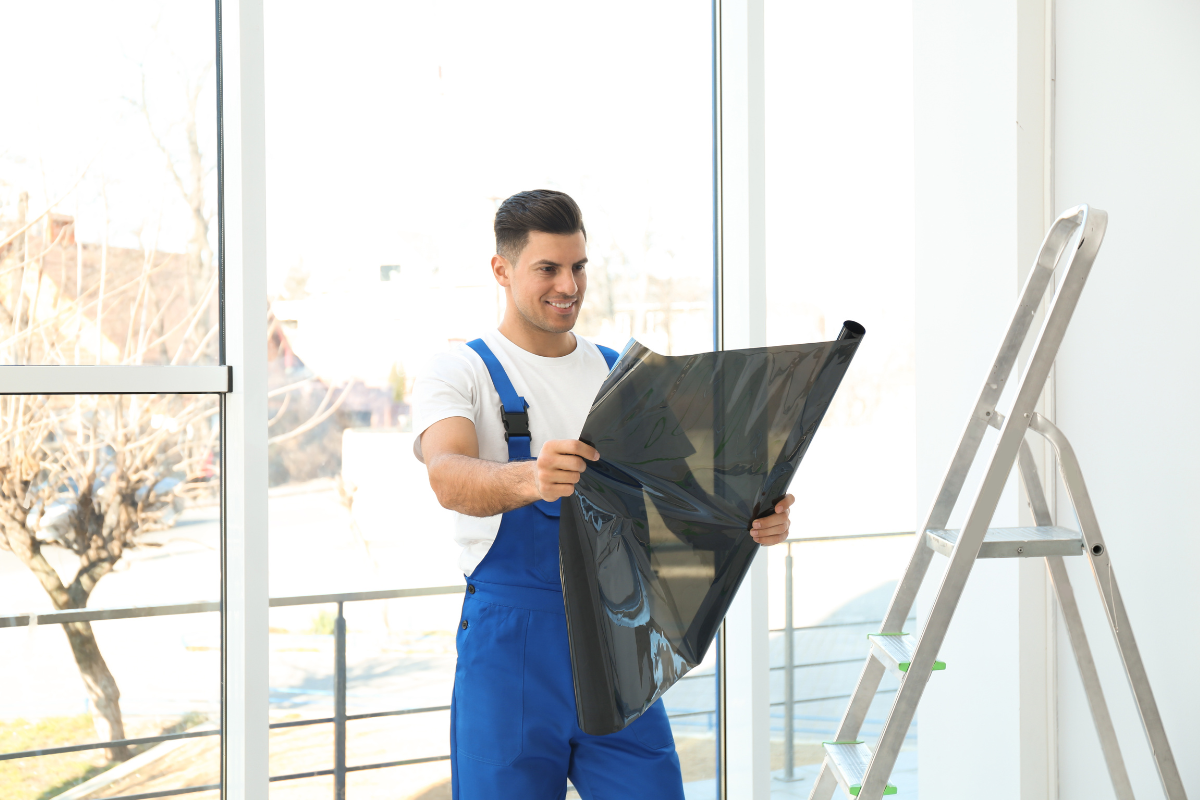
Coolaroo vs. EZ Snap
Similarly, Coolaroo and EZ Snap occupy opposite ends of the solar screen spectrum. Coolaroo pre-assembled aluminum-framed shades designed specifically to fit standard window sizes.
Their $100 to $200 price tag buys a complete ready-to-install product. EZ Snap appeals to DIYers with its snap-on polyester solar screen material and hardware kit priced near $65. Their lower cost means more sweat equity.
Evaluating Solar Screen Materials
Solar screening fabrics come in a few common types, each offering their own performance characteristics.
For example, woven polyethylene and color-stable polyester blend well with various architectural styles while delivering adequate UV and heat control.
However, high-performance knitted fabrics like SunTex 90 excel at reducing cooling costs in challenging climates.
Factors like density, UV resistance, material breathability, durability and color/tone range impact functionality and should align with your location and priorities.
Darker densities that feel opaque to the touch tend to block more solar radiation but reduce outward visibility.
Lighter transparent options maintain views but may not significantly reduce cooling bills. Conducting research on fabric specs can ensure you select appropriate screening material for your needs.
Maintenance Best Practices
While quality solar screens hold up well to normal weathering, periodic maintenance preserves their performance. An annual gentle cleaning removes accumulated pollen, dust and dirt.
Mix mild soap like dish liquid or baby shampoo with warm water and apply gently with a soft brush avoiding abrasions.
Rinse thoroughly. Check that all screen components remain securely fastened and adjust accordingly.
Spot check for tears or holes especially after severe storms. Patch small gaps with solar screen repair tape woven from UV-resistant material that matches most screen colors.
Larger holes or extensive degradation necessitate sewing repairs or section replacements depending on the solar screen type. DIY maintenance extends useful lifespan.
Solar Film Application
If your existing windows lack sufficient overhangs or exterior screens seem out of reach, consider applying solar control window film. These thin polyethylene sheets adhere directly to interior glass surfaces.
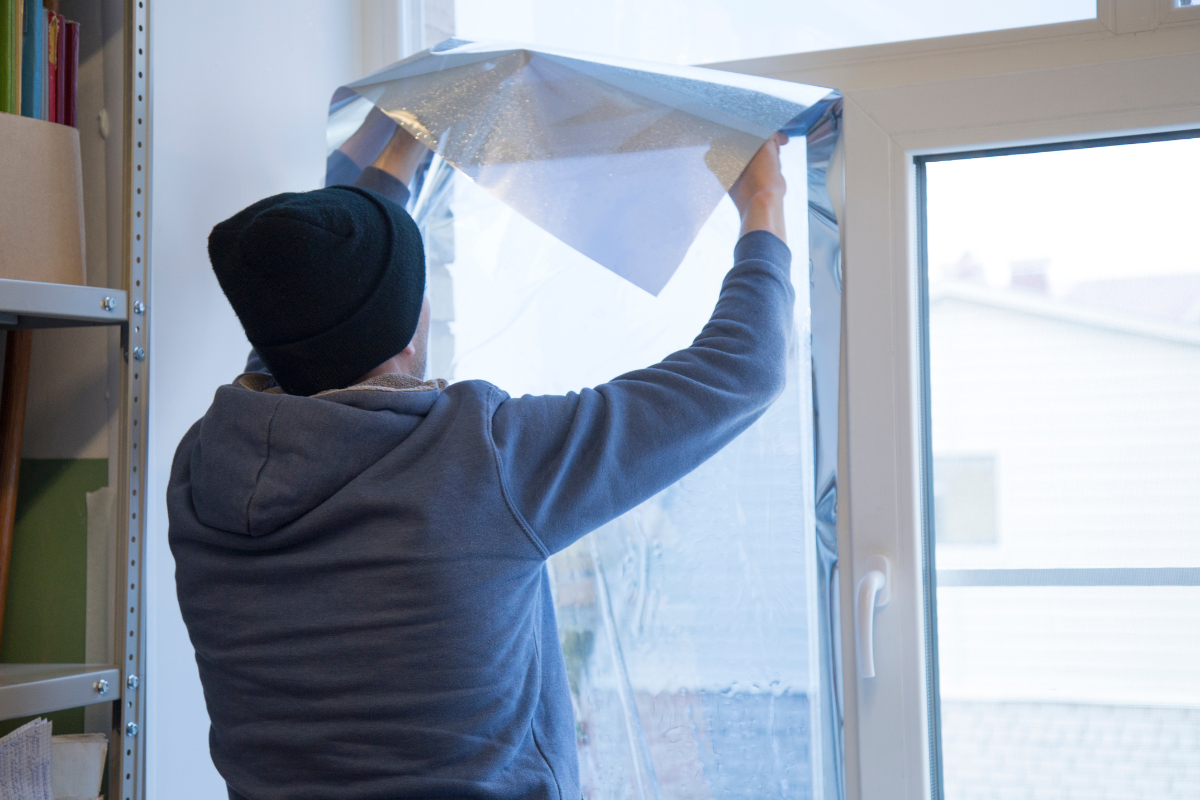
Quality brands like LLumar block up to 97% of infrared light that transfers heat while maintaining visible light transmittance. This keeps interiors brighter than dark solar screens.
Professional installation ensures tight adhesion, smooth finish and proper sizing to maximize efficiency. Costs range from roughly $6 to $12 per square foot.
While not as effective as exterior systems, solar films provide a temporary fix for excessive solar gain through windows. They also protect furnishings from fading until you can budget for replacement screens.
Automation Options
Home automation systems allow convenient control over motorized solar screens.
Units like the ZWave/Zigbee-compatible Somfy Sonesse 40 WireFree RTS battery-powered system provide remote operation of exterior screens via phone apps, voice commands or automated schedules.
This allows adjusting the amount of light and airflow into different rooms as needed for activities or times of day.
Automated screens add convenience as well as programmed optimization but require sufficient window frames and sills to support hardware.
Fortunately multiple power options exist beyond hardwired electric including battery, solar and alternative energy sources.
Smart motorization ranks as a popular upgrade once Solar screens get installed. The luxury of temperature and lighting regulation at your fingertips takes solar window screens to the next level.
Conclusion
You can already dream of relaxing in a cooler home without forking over a fortune to the electric company. Solar screens offer a comfortable, energy-efficient solution to summer’s blistering temperatures.
With options spanning DIY shade cloth to professionally installed custom screens, you can block annoying sunlight at any budget.
Give your home an upgrade that pays dividends for years while allowing everyone to better enjoy the outdoors.
Reach out to Arrowhead Solar Screens Texas today to transform your windows from a liability into an asset this summer!







